Women in Rossetti’s Life and Art: Muses and Lovers
Anyone who knows of the Pre-Raphaelite Brotherhood will remember their style by the representation of a very particular type of woman – the ones with angular facial features, prominent jawline, straight nose, voluminous hair – the type of women most famously portrayed by one of the founding members of the brotherhood, Dante Gabriel Rossetti. Unlike the Victorian prototypes that look like china dolls, those women were somewhat grotesque, statuesque, and strong. His contemporaries saw women by Rossetti as “powerfully haunting, tall, dominant, impassive and quite merciless” and criticized him for this.
Representation of Women by Dante Gabriel Rossetti
How on earth did they decide that the figure in a painting is “merciless” – I don’t know. But it chimes with the anxious reactions against newly found women’s rights in the 1870s and 1880s. The Women’s Property Act of 1883 gave wives the right to retain personal earnings from employment separate from their husbands’ – until then married women had no rights to their own property. Other major issues in Victorian England were a women’s right to vote and, in the late 1870s, the first publications on birth control were released. Under these circumstances, it is no wonder that the image of a “dominant woman” caused a certain fear or dislike among the opposers, a reaction that had nothing to do with its aesthetic merit.
Women in Rossetti’s art are:
Larger-than-life goddesses who communicate some allusive meaning related to the artist’s own experience and understanding of life.
Like a good Platonian that he was, Rossetti loved the idea of beautiful and powerful women and religiously reproduced their images. Yet, I can’t say whether the real women in his life were treated by the artist with the same devotion. He married Elizabeth Siddal, had a rumored affair with Fanny Cornforth, and found love with Jane Morris, his friend, William Morris’ wife. It isn’t for us to judge his tumultuous love-life and even more calamitous personal life, most of which passed in the haze of chloral abuse and the copious amount of whiskey. But one thing is for sure; he drew his muses as faithfully as one can.
1. Elizabeth Siddal
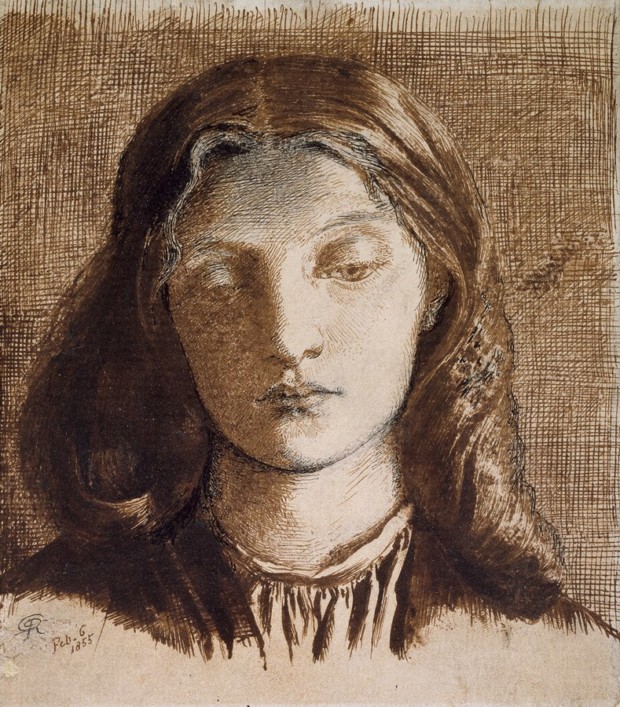
Elizabeth Siddal, an aspiring poet and painter entered the Pre-Raphaelite circle as a model at around 1849. She sat for several artists of the group. In fact, she was the model for John Everett Millais’ famous painting Ophelia. To recreate the image of a drowning woman, she had to lie in a bathtub of water heated by lamps; the lamps went out during the sitting and Siddal caught a severe cold.
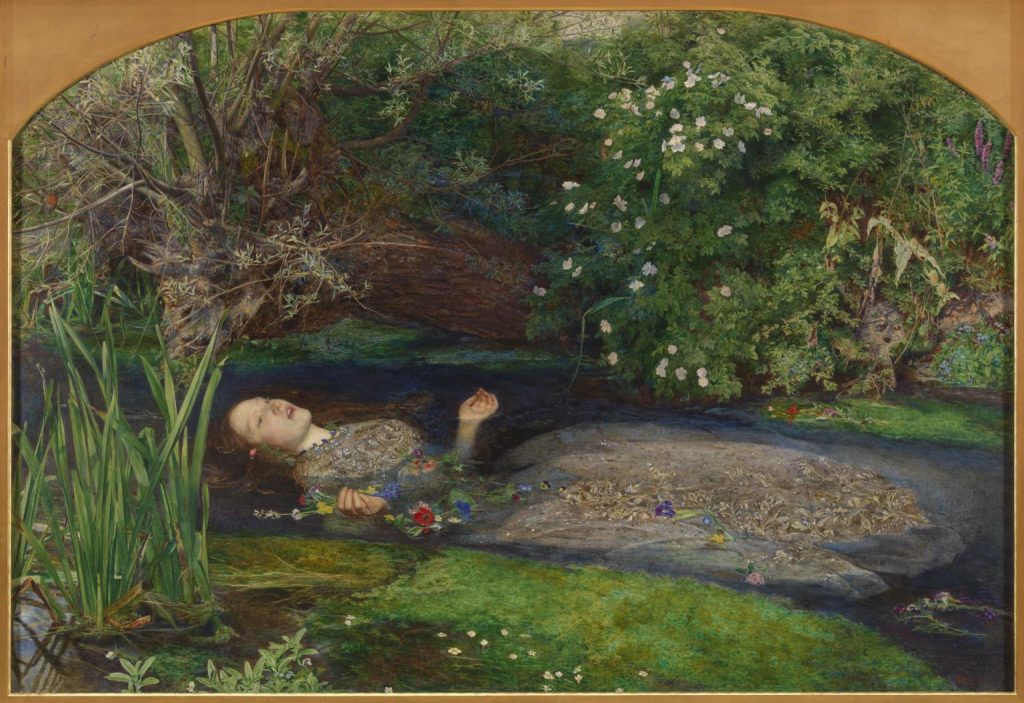
Siddal first sat for Rossetti in 1851 and became his main model a year later. Possessive with all of his models, Rossetti sent out clear signals that he didn’t want any competition. As a daughter of a cutler, she was of a lower status than the Pre-Raphaelite male circle. Her reputation as an artist has been obscured by her role as Rossetti’s muse, model, mistress, and wife. Rossetti gave her informal lessons and John Ruskin recognized her talent and gave her financial support.

Shy and reserved, she was frequently ill and kept away from the polite society. By the mid to late 1850s her health deteriorated beyond recovery. After much hesitation, Rossetti married her in 1860. The following year she gave birth to a stillborn child and in 1862 she died tragically from an overdose of laudanum. The grieving husband buried all of his poems with his wife. But her face is immortalized in Rossetti’s Beata Beatrix, the painting symbolizing his love for her, along with hundreds of preliminary sketches and drawings which Rossetti produced almost fanatically during their brief and tragic life together.
2. Fanny Cornforth
Unlike his early years, when he drew Siddal with absolute obsessiveness, Rossetti’s attitude towards women changed in the later 1850s and became more complex. The change took place around the time when he met the model Fanny Cornforth. Many saw her hanging around in his house which he rented after his wife’s death, and the rather immediate substitute of his artistic muse was even more evident in his paintings. Earlier art historians were quick to identify her as a prostitute and Rossetti’s mistress, but later studies tend to suggest that it was sheer speculation. But, as a matter of fact, she has been a good friend of his until his death.
In this drawing, Rossetti showed Fanny with the artist George Price Boyce (1826-1897), with whom she also had an intimate relationship. While this might be a portrait of the close friends he hung around with, it might also be a reference to his “bohemian” studio life.
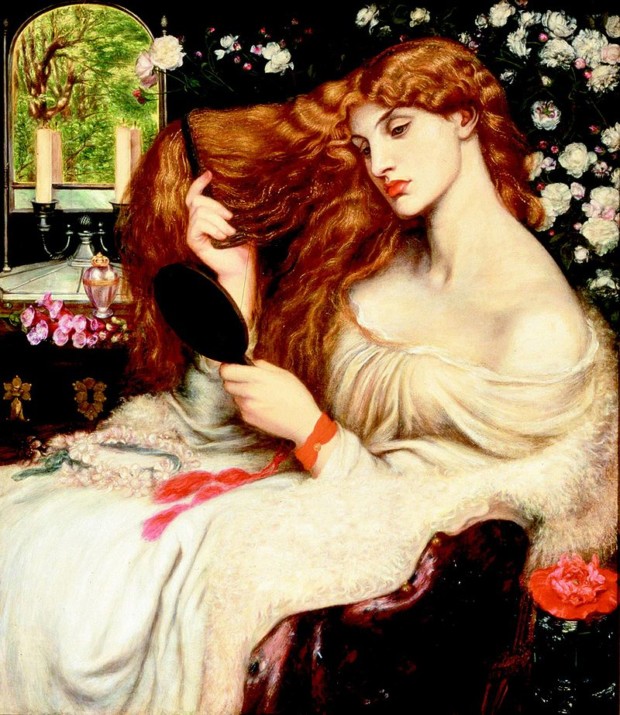
Cornforth has been a model for many of his famous paintings, including The Blue Bower, and the famous Bocca Baciata, both of which are imbued with literary references and imagery symbolism of Fanny’s dubious role in, not just his, but many other men’s lives. Here, in the painting above of the Lady Lilith (the first wife of Adam, in fact – Adam had another wife prior to Eve, and she looks like a stunner!), Rossetti painted over the original face of the model with Cornforth’s.
3. Jane Morris
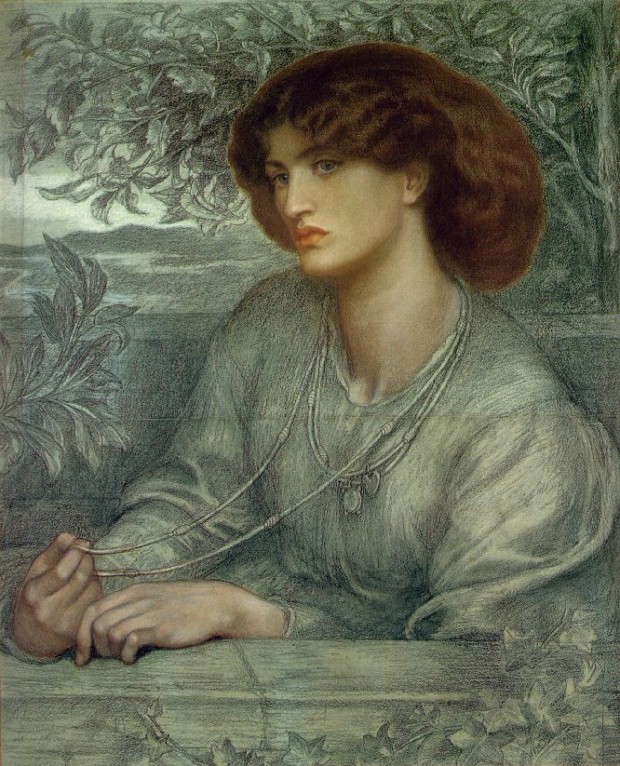
Among all of his muses, Jane Morris was the one who left the most eminent mark on Rossetti’s art and who was a major inspiration during his most prolific period of life. Jane was already involved with William Morris by 1858. Later she told her lover Wilfrid Scawen Blunt that she never loved Morris but only married him because he was a better supporter. But she may have been more attracted to Rossetti, who was already with Siddal.
Jane Burden had first entered Rossetti’s life in 1857. But it was not until 1865, three years after Siddal’s death, that Jane Morris started sitting regularly for Rossetti.
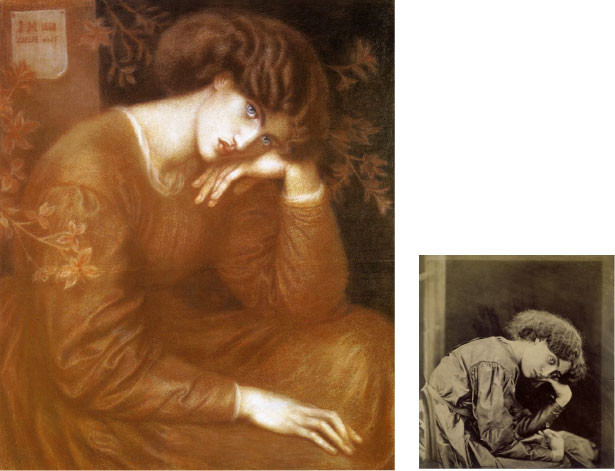
By 1870 the love affair between Rossetti and Jane Morris was obvious to all, even to William Morris. But it was evident that none of the three wanted a public scandal. William Morris even rented a Manor house together with Rossetti and had left to Iceland for research, whilst Jane and Rossetti lived there with their children.
In his painting La Pia de’ Tolomei Rossetti has left an inscription in Latin which translates:
Famous for her poet husband, and famous for her face, may my picture add to her fame.
Inscription in Dante Rossetti’s La Pia de Tolomei.
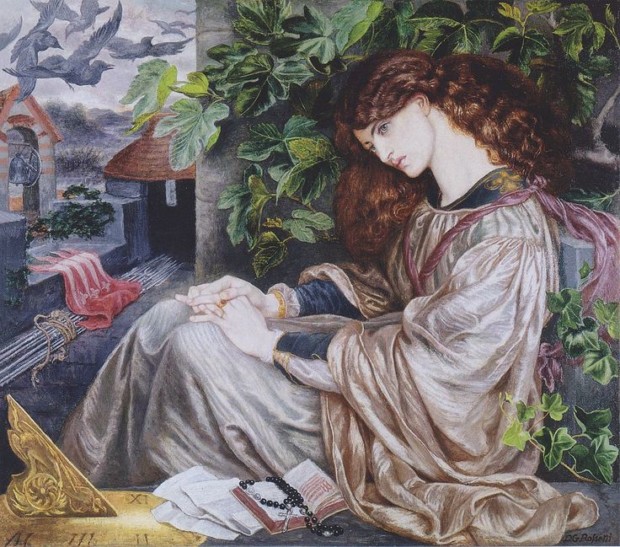
Love Turns to Compassion
Regardless of his fame, Rossetti did not handle criticism well. To avoid it, he even ceased to display his artworks in public exhibitions in the late 1860s. Now, terrified that his affair with Jane might become public and that her name would be sullied, he had a severe nervous breakdown. As a result, he attempted to commit suicide by taking laudanum, as his wife had done. Even after his recuperation, he suffered excessively and used chloral taken with a dubious amount of whiskey to cure his insomnia.
During the period of 1875–1876, Rossetti lived in Aldwick Lodge. Jane spent a lot of time with him, returning home only during Christmas. During this time Jane discovered the extent of his addiction to chloral. After Rosetti’s second breakdown in 1877, it became evident that they could have no future together. The passion cooled off and turned into mutual compassion.
Later Jane was asked whether she had been very much in love with Rossetti, to which she answered:
Yes, at first, but it did not last long. It was very warm while it lasted. When I found out that he was ruining himself with Chloral and that I could do nothing to prevent it I left off going to him – on account of the children… If you had known him, you would have loved him and he would have loved you – all were devoted to him who knew him. He was unlike all other men.
Jane Morris on her relationship with Dante Gabriel Rosetti. Jane Morris: The Burden of History, Wendy Parkins.
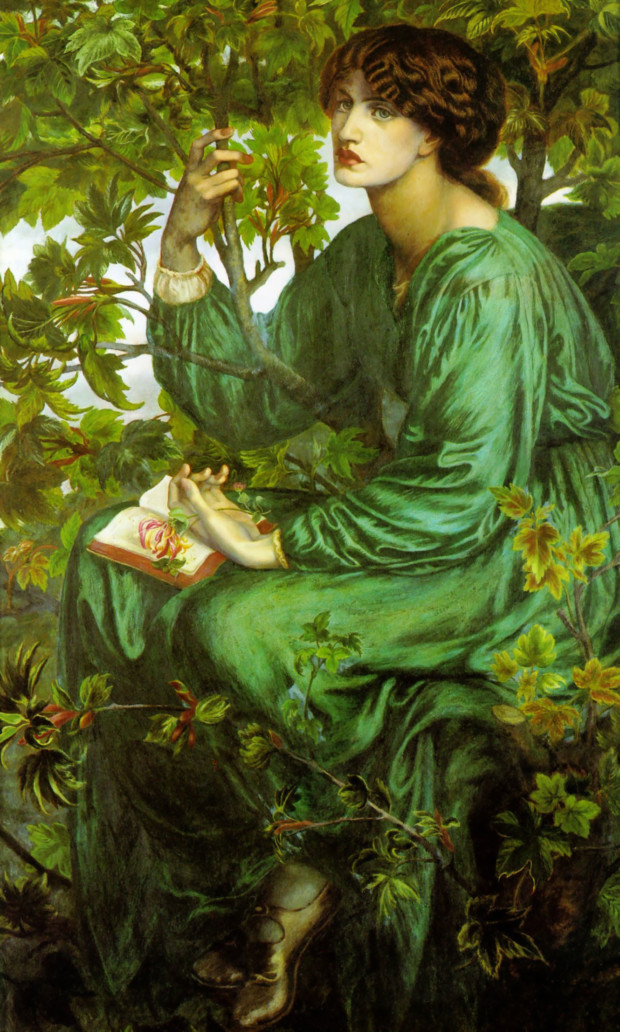
Exquisite Portraits
Jane Morris continued to pose for Rossetti through 1881, the year before his death. He captured her image in such exquisite portraits as Bruna Brunelleschi and The Day Dream. But the most favored of them all was his paintings on the theme of Proserpina, goddess abducted by Jupiter to be the wife of Hades, for which Morris provided both the meaning and the model.


